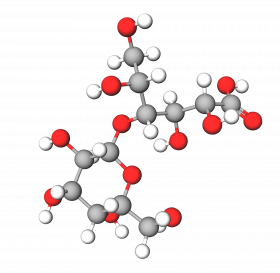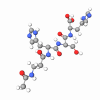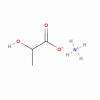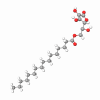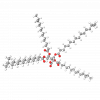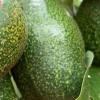Lactobionic acid is a polyhydroxy acid (PHA) that can be produced from lactose (a disaccharide with glucose and galactose units), where the glucose unit is oxidated into gluconic acid. It is used as a high-end food preservative due to no effect on flavor, color, or taste with excellent anti-oxidant properties.
In skin care applications, Lactobionic acid forms a gel film that is oxygen-permeable and moisture impermeable. The film is water soluble, has anti-aging properties, and has high moisturizing properties. It is also valued for its exfoliation ability, like other hydroxy acids used for chemical peeling, this PHA acts as a mild keratolytic agent, eliminating dull, old, and dead keratinocytes from the skin surface and exposing a fresh, bright, and radiant appearance.
Thanks to a larger molecule size than most AHAs used for chemical peeling, it can penetrate only into the superficial layer avoiding adverse effects like skin irritation after treatment. The molecule of lactobionic acid contains multiple hydroxy groups which attract water molecules, providing outstanding moisturization and humectant action.
Lactobionic acid promotes extracellular matrix (ECM) component production and increases skin renewal rate. In addition, it exhibits good antioxidant, chelating, and pH-adjusting properties making it an excellent ingredient for skincare preparations.